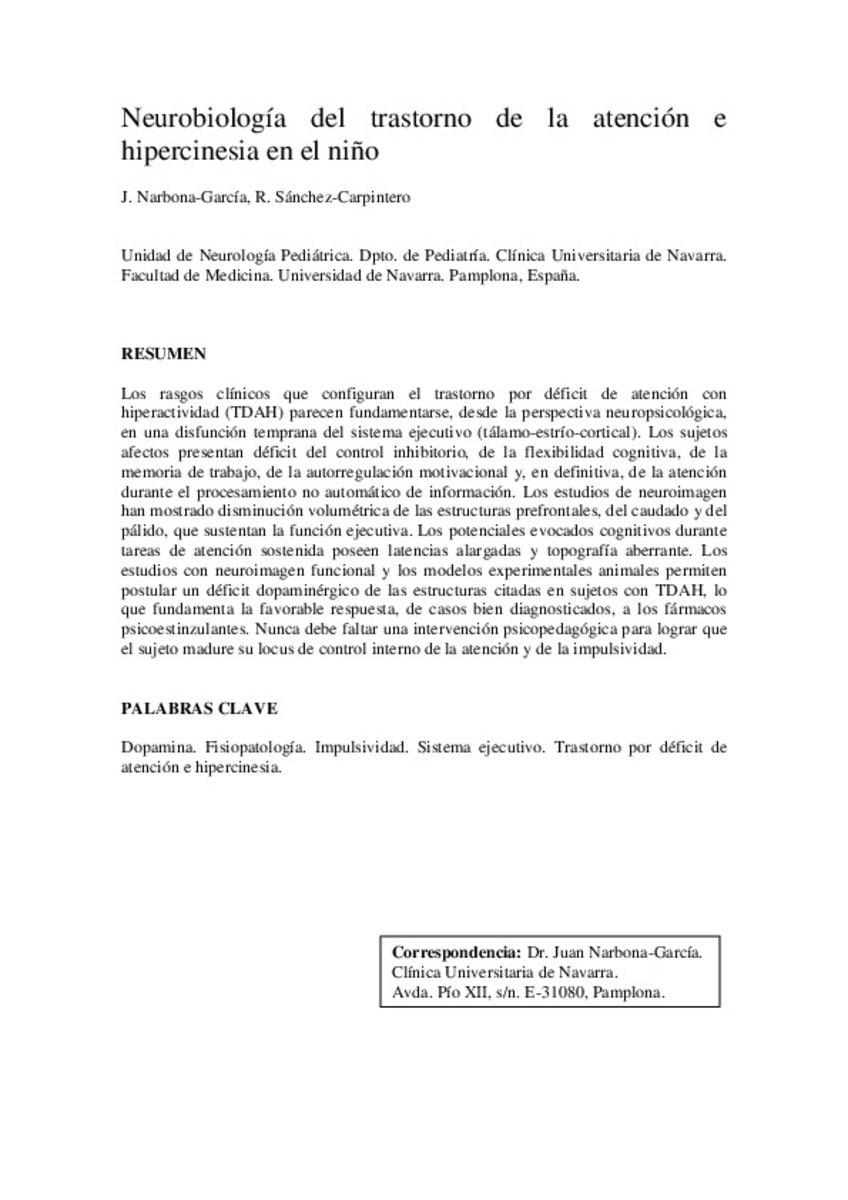Neurobiología del trastorno de la atención e hipercinesia en el niño
Palabras clave :
Dopamina
Fisiopatología
Impulsividad
Sistema ejecutivo
Trastorno por déficit de atención e hipercinesia
Fecha de publicación :
feb-1999
Editorial :
Cesar Viguera
Cita:
Narbona-García J, Sánchez-Carpintero R. Neurobiología del trastorno de la atención e hipercinesia en el niño. Rev Neurol. 1999 Feb;28 Suppl 2:S160-4.
Aparece en las colecciones:
Estadísticas e impacto
0 citas en

0 citas en

Los ítems de Dadun están protegidos por copyright, con todos los derechos reservados, a menos que se indique lo contrario.







